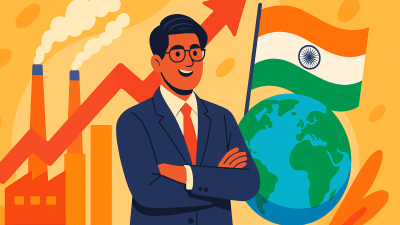YouTube’s incredible growth from a simple video-sharing platform to the world’s second-largest search engine is a testament to digital innovation. With over 2 billion monthly active users searching through billions of hours of content, YouTube has established itself as a powerhouse, second only to its parent company Google in search volume.
This digital transformation has completely changed how people find and consume information. From DIY tutorials to educational content, entertainment to breaking news, YouTube serves as a universal hub for video-based knowledge and entertainment.
In this comprehensive guide, we’ll explore:
- The strategic moves that propelled YouTube to its current status
- Key factors behind its dominance in the search engine landscape
- Essential optimization techniques for content creators
- Real success stories from the platform
- Proven strategies for maximizing video visibility
Whether you’re a content creator, marketer, or curious observer, understanding journey to becoming a search engine giant offers valuable insights into the evolving digital landscape.
The Birth and Evolution of YouTube
YouTube was created in 2005 by three former PayPal employees – Chad Hurley, Steve Chen, and Jawed Karim. They saw a need for a platform where people could easily share videos online. The idea for YouTube came about when they wanted to find a way to share videos from a dinner party and also search for footage of Janet Jackson’s Super Bowl performance.

The First Video Upload
The first video ever uploaded to YouTube was “Me at the Zoo,” which featured co-founder Jawed Karim at the San Diego Zoo. This historic moment marked the beginning of YouTube’s journey.
Rapid Growth and Innovative Features
Within months of its launch, YouTube attracted millions of users, showcasing its innovative features:
- Simple Video Sharing: A straightforward interface for uploading and viewing videos
- Embed Codes: The ability to share videos across different websites
- Public Comments: A revolutionary social interaction feature for videos
These features set YouTube apart from other video-sharing platforms and contributed to its rapid growth.
Acquisition by Google
In November 2006, Google recognized YouTube’s potential and acquired the platform for $1.65 billion. This acquisition proved transformative for YouTube, providing it with:
- Advanced infrastructure support
- Sophisticated advertising capabilities
- Enhanced search functionality
- Integration with Google’s extensive network
The backing of Google allowed YouTube to scale its operations and reach an even wider audience.
Unique Approach to Video Sharing
YouTube’s early success can be attributed to its unique approach to video sharing. Unlike its competitors, YouTube focused on:
- User-generated content
- Social networking elements
- Unlimited video hosting
- Browser-based video playback
These foundational elements established YouTube as a pioneer in digital video sharing and laid the groundwork for its future dominance in the online search landscape.
Understanding YouTube’s Role as a Search Engine
A search engine is a tool that helps users find specific information by processing their queries and providing relevant results. It is highly effective in this role, handling over 3 billion searches every month, making it the second most active search platform in the world after Google.

How YouTube Ranks Videos
YouTube’s search algorithm takes into account several factors when determining the ranking of videos:
- Relevance of Video Titles: The algorithm looks for matches between the search terms and video titles.
- Watch Time: The amount of time viewers spend watching videos is an important factor.
- Engagement Metrics: Likes, comments, and shares on videos also play a role in ranking.
- Authority of Channels: The number of subscribers and overall performance of a channel can impact its video rankings.
YouTube’s Search Traffic Compared to Other Engines
YouTube’s search traffic exceeds that of traditional search engines by a wide margin. While Bing handles roughly 900 million searches per month and Yahoo processes about 500 million, YouTube’s 3 billion monthly searches clearly demonstrate its strong position in the online world.
User Engagement Statistics on YouTube
The following statistics highlight YouTube’s dominance as a search platform:
- Over 2 billion active users each month
- 1 billion hours of content watched every day
- 500 hours of video uploaded every minute
- Content available in more than 80 languages
Integration with Google
YouTube’s integration with Google further enhances its search capabilities. When users perform searches on Google, they often see YouTube videos appearing in the results through:
- Video carousels
- Featured snippets
- Direct video embeddings
This seamless connection between Google and YouTube creates a powerful search network, allowing users to discover video content through various channels. The sophisticated search algorithm used by YouTube continues to evolve, incorporating machine learning techniques to better understand user intentions and deliver increasingly relevant results.
Factors Contributing to YouTube’s Dominance
YouTube’s unparalleled success stems from its diverse content ecosystem and sophisticated search optimization capabilities. The platform hosts an extensive range of content categories:
- Educational Content: From academic lectures to DIY tutorials
- Entertainment: Music videos, comedy sketches, gaming streams
- News and Commentary: Breaking news, political analysis, documentaries
- Lifestyle: Fashion, cooking, fitness routines
- Business: Marketing strategies, entrepreneurship advice
- Tech Reviews: Product unboxings, software tutorials
- Special Interest: Niche hobbies, specialized skills

This content diversity creates a self-sustaining ecosystem where users find solutions, entertainment, and inspiration across multiple interests. A user searching for guitar lessons might discover music theory videos, instrument reviews, and performance techniques – all within the same platform.
YouTube’s Sophisticated Search Algorithm
The platform’s sophisticated search algorithm considers several key factors:
- Video Title Optimization
- Thumbnail Design
- Video Description
Video Title Optimization
- Strategic keyword placement
- Clear, descriptive titles
- Search intent alignment
Thumbnail Design
- High-contrast images
- Text overlay optimization
- Brand consistency
Video Description
- Detailed content summaries
- Relevant links and timestamps
- Keyword-rich descriptions
User Behavior Metrics Analyzed by YouTube’s Algorithm
YouTube’s algorithm analyzes these elements alongside user behavior metrics:
- Watch time
- Click-through rates
- Audience retention
- Engagement signals (likes, comments, shares)
Creator-Friendly Features on YouTube
The platform’s success also relies on its creator-friendly features:
- Analytics Dashboard: Detailed performance metrics
- YouTube Studio: Professional editing tools
- Community Tab: Direct audience interaction
- End Screens: Strategic video recommendations
These tools empower creators to optimize their content continuously, leading to improved search rankings and increased visibility. The combination of diverse content and sophisticated optimization tools creates a powerful ecosystem that attracts both creators and viewers.
Myths Surrounding YouTube’s Search Capabilities
Several misconceptions cloud users’ understanding of YouTube’s search functionality. Let’s debunk these common myths:
Myth #1: Subscribers Are the Primary Source of Views
While subscribers provide a loyal viewer base, YouTube’s algorithm distributes content far beyond subscription feeds. Data shows that 70% of watch time comes from YouTube’s search and recommendation systems rather than subscription pages.
Myth #2: Trending Tab Drives Most Traffic
The trending section represents a tiny fraction of YouTube’s content discovery. YouTube’s search function processes over 3 billion searches monthly, making it a more significant traffic driver than the trending tab.
Myth #3: Video Age Determines Visibility
Many creators believe newer videos automatically rank higher. YouTube’s algorithm prioritizes relevance and quality over upload date. Well-optimized older videos often outperform recent uploads in search results.
Myth #4: View Count Equals Search Success
High view counts don’t guarantee better search rankings. YouTube’s algorithm considers:
- Watch time
- User engagement (likes, comments, shares)
- Click-through rates
- Audience retention
Myth #5: Tags Are No Longer Important

Tags remain valuable for search optimization. They help YouTube understand video context and improve visibility in related video suggestions, though they should complement, not replace, strong titles and descriptions.
Optimizing Videos for Search Engines
Effective YouTube SEO practices can significantly boost your video’s visibility in search results. Here’s a comprehensive guide to optimize your content:
Title Optimization
- Create descriptive titles under 60 characters
- Place primary keywords at the beginning
- Use numbers and power words to increase click-through rates
- Avoid clickbait – deliver on your title’s promise
Description Best Practices
- Write detailed descriptions (200+ words)
- Include primary keywords in the first 2-3 sentences
- Add timestamps for longer videos
- Insert relevant links to your social media and website
- Include category-specific hashtags (3-5 maximum)
Tag Strategy
- Start with exact-match target keywords
- Include variations of your main keyword
- Add broad and niche-specific tags
- Use tools like VidIQ or TubeBuddy for tag research
Additional Optimization Tips
- Create custom thumbnails with clear text and high contrast
- Add closed captions and transcripts
- Organize videos into themed playlists
- Include end screens and cards to increase watch time
File Name and Category
- Name your video file with target keywords before uploading
- Select the most relevant category for your content
- Add location tags if content is geography-specific
These optimization techniques work together to signal relevance to YouTube’s algorithm. Regular monitoring of your video analytics helps refine these strategies based on performance data.
Community Engagement Strategies on YouTube
Building a thriving YouTube community requires strategic engagement beyond content creation. Successful creators understand the power of consistent interaction with their audience.

Key Community Building Strategies:
1. Consistent Posting Schedule
- Create a content calendar
- Post at optimal times when viewers are most active
- Maintain regular upload frequency (daily, weekly, bi-weekly)
2. Active Viewer Engagement
- Respond to comments within 24 hours
- Pin meaningful comments to spark discussions
- Ask questions in videos to encourage viewer participation
3. Community Tab Utilization
- Share behind-the-scenes content
- Post polls to gather audience feedback
- Preview upcoming content
Live Streaming Benefits:
- Real-time interaction with viewers
- Immediate feedback and discussion
- Enhanced connection with the audience
- Super Chat revenue opportunities
Analytics-Driven Engagement:
- Track audience retention rates
- Monitor peak viewing times
- Analyze comment patterns
- Adjust content based on viewer feedback
The YouTube algorithm favors channels with high engagement rates, making community interaction essential for channel growth. Creators who master these engagement strategies often see increased subscriber counts, higher watch times, and improved video performance in search results.
Monetization Opportunities for Creators on YouTube
YouTube offers multiple revenue streams for content creators through its Partner Program. Qualified creators can earn through:

- Ad revenue sharing from pre-roll, mid-roll, and display advertisements
- Channel memberships with exclusive perks for paying subscribers
- Super Chat and Super Stickers during live streams
- Merchandise shelf integration below videos
- YouTube Premium revenue share
The platform requires creators to meet specific eligibility criteria:
- 1,000+ subscribers
- 4,000+ valid public watch hours in the last 12 months
- Compliance with YouTube’s monetization policies
- Active AdSense account
Successful creators often diversify their income through brand sponsorships, affiliate marketing, and crowdfunding platforms. The Partner Program serves as a foundation for creators to transform their passion into a sustainable career.
Personal Success Stories from Creators on YouTube
The transformative power of YouTube as a career platform shines through countless creator success stories. Here are three remarkable examples:
1. MrBeast (Jimmy Donaldson)
- Started with gaming videos at age 13
- Built an empire through viral challenge videos
- Now generates $54 million annually
- Launched successful business ventures, including MrBeast Burger

2. Marques Brownlee (MKBHD)
- Began creating tech reviews in high school
- Grew to 16.8 million subscribers
- Named “best technology reviewer” by Google’s VP
- Established himself as a leading voice in tech journalism

3. Jenna Marbles
- Started with comedy sketches in 2010
- Amassed 20 million subscribers
- Pioneered authentic content creation
- Inspired countless female creators to join the platform

These success stories demonstrate YouTube’s potential as a launching pad for diverse careers, from entertainment to education. Each creator started with minimal resources but leveraged YouTube’s search capabilities and audience engagement features to build substantial followings and sustainable businesses.



